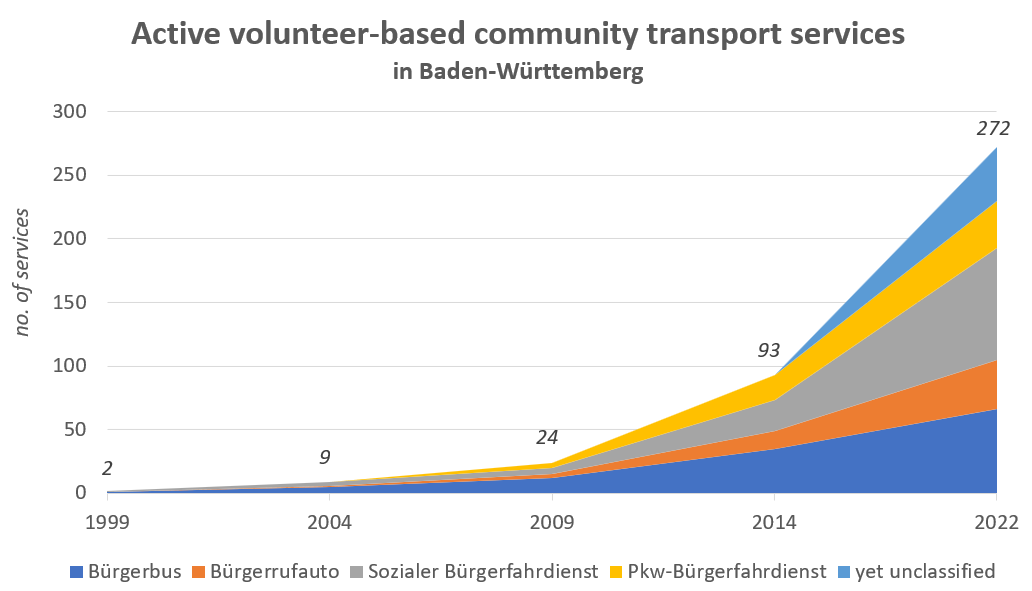Community transport - a mobility service with a social dimension
Dr. Martin Schiefelbusch
Around the world, public transportation (PT) services are the most common and longest-established type of “shared mobility”. They aggregate demand for mobility and deliver social benefits by providing mobility also for those unable to drive, cycle or walk longer distances. To maximize efficiency, the by far most common service concept can be summed up as the “fixed route, fixed stop, fixed timetable” arrangement. Furthermore, large capacity vehicles such as buses, trams, trains are used.
When we now think about rural areas, this concept of PT is at odds with rural mobility patterns, where population density is lower and population is usually scattered in numerous small settlements, from individual farm sites to country towns. This translates into a low density of demand. Transportation is both an actor and a victim in this situation: on the one hand, the availability of transportation is an essential tool for providing rural areas with goods and services, hence allowing people to live there. On the other hand, however, transportation is also subject to the same “low density problem”: service provision gets more costly. Therefore, it must have suitable tools to serve the small-scale and dispersed mobility needs typical of countryside settings.
One way to achieve this is by giving more space to locally planned and operated services and to develop better-tailored solutions and more cost-efficient ways of service provision. In the English-speaking world, this approach is known as ‘‘community transport’’ (CT). In Germany, the umbrella term is ‘‘Gemeinschaftsverkehr’’ is a much more recent concept, although certain elements of community transport have been in use for some time. The aim of these new concepts is to identify and serve mobility needs – especially in low-density environments – in a collaborative way and seek to respond to these needs in a way that considers economic feasibility, respects social needs and contributes to reducing the negative environmental impacts of transportation.
In German context, a comprehensive view of the transportation services that correspond to the British CT is fairly recent. Nevertheless, there are now 35 years of experience with volunteer-based public transport, commonly known as “Bürgerbus”: a public transport service which uses unpaid volunteers for most or all tasks, in particular for driving the vehicles. A Bürgerbus is part of the public transport system. The vehicles used are minibuses or large passenger cars.
Diagram: Volunteer-based transportation initiatives
The number of volunteer-based transportation initiatives in Germany has increased considerably in recent years (see diagram). As a result, the term “Bürgerbus” has become fuzzier in its meaning as well: service concepts have diversified in relation to schedules, objectives, target groups, vehicles used and organisational arrangements. Other approaches like “Bürgerrufauto” (demand responsive version of the Bürgerbus), “Sozialer Bürgerfahrdienst” (service for specific customer groups) or “PKW-Bürgerfahrdienst” (where the volunteers use their own cars) have been developed. The table below describes some exemplary services in more detail. The main characteristics of all these transport services in Germany can be summed up by their rootedness in the local community (in particular through the importance of volunteer involvement, use of local resources and knowledge) and their character as a mixture of a transport mode, a social service and a community project.
As a consultant and policy advisor for “Gemeinschaftsverkehre” in Baden-Württemberg, my paper “Shared Responsibility for Shared Mobility: Community-Based Transportation in Germany” discusses some broader questions linked to the idea of CT, such as the potential tensions between ‘‘top-down’’ and ‘‘bottom-up’’ views on planning, formal and regulatory challenges, as well as required competences and resources for implementing such services. The paper concludes with some reflections on the links between community transportation and society as well as possibilities for transferring the concept to other settings.
Table: CT examples in the state of Baden-Württemberg
Article Details
Shared Responsibility for Shared Mobility: Community-Based Transportation in Germany
Dr. Martin Schiefelbusch
First Published December 26, 2023 Research Article
DOI: 10.1177/03611981231215339
Transportation Research Record: Journal of the Transportation Research Board
About the Author



